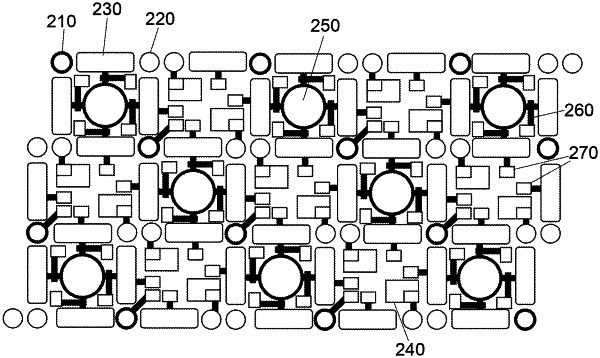| CPC H10N 99/05 (2023.02) [G06N 10/40 (2022.01)] | 20 Claims |

|
1. A silicon-based device for quantum information processing, the device comprising:
a first plurality of confinement regions for confining spinful charge carriers for use as data qubits;
a second plurality of confinement regions for confining spinful charge carriers for use as ancillary qubits, each confinement region of the second plurality of confinement regions couplable to measurement apparatus for measuring an ancillary qubit;
a third plurality of confinement regions for confining spinful charge carriers, each confinement region of the third plurality of confinement regions situated on a line between a first confinement region of the first plurality of confinement regions and a second confinement region of the second plurality of confinement regions in order to space them apart and for use in mediating interactions between a data qubit of the first confinement region and an ancillary qubit of the second confinement region, the mediated interactions comprising interactions affecting respective data qubits and respective ancillary qubits at substantially the same time to enable coupling interactions between the respective data qubits and the respective ancillary qubits; and
one or more charge reservoirs;
wherein each confinement region of the third plurality of confinement regions is couplable to a charge reservoir of the one or more charge reservoirs.
|